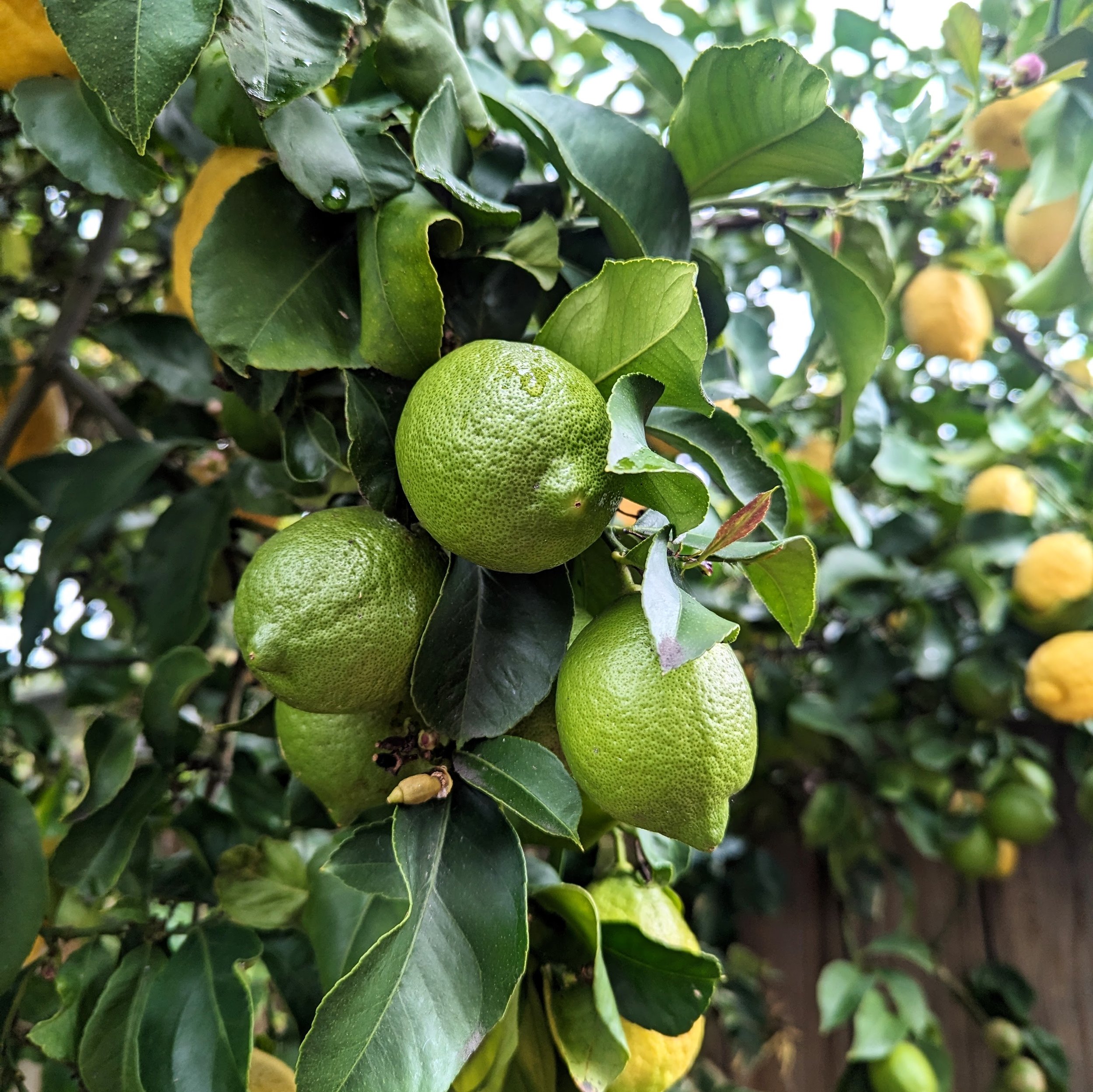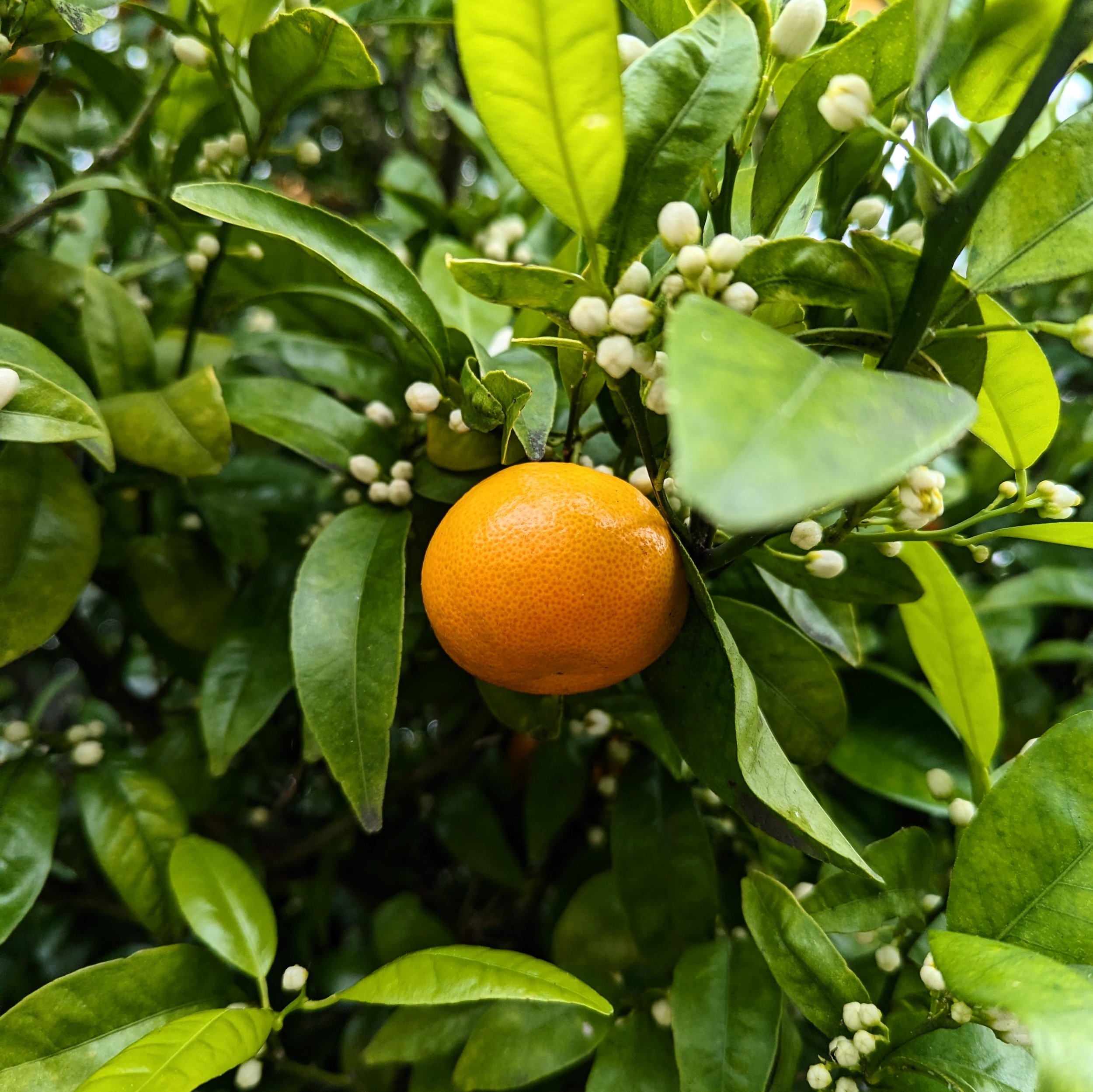Fruit Tree Success in California: Your Guide to the Right Varieties & Care
Fruitful Bounty in Your California Backyard
Imagine stepping into your California backyard and plucking a sun-warmed Mission fig, its honeyed sweetness melting in your mouth. Or biting into the spicy-sweet flavor of a fig fresh from the tree, unlike anything from the store. Last summer, the simple joy of picking perfectly ripe Mission figs off my backyard tree was an absolute delight! With careful planning, your garden can be a haven of delicious fruit! California's diverse climates offer a vast array of options, from classic favorites to exotic treats (think mangoes and guavas in some regions!). Whether you have acres of land or a sunny patio, there's a fruit tree out there for you. This guide will help you choose the perfect varieties, plant them with success, and reap the sweet rewards.
Ready to start exploring those key considerations for choosing the best fruit trees for your California garden?
Key Considerations for California Fruit Trees
Choosing the perfect fruit tree isn't just about picking your favorite flavor. Success in California gardens hinges on understanding a few essential concepts. Let's demystify those considerations:
Chill Hours: Think of this as your fruit tree's winter vacation requirement! Many fruit trees need a period of cold temperatures (below 45°F) to set buds and produce a good crop. Choose trees with chill hour requirements aligning with your region of California.
Size Matters: Don't let space constraints limit your dreams! Fruit trees come in various sizes, from dwarf varieties suitable for containers to semi-dwarf and standard-sized trees. Match the tree's mature size to your available space.
Self-Pollinating vs. Cross-Pollination: Some trees are superstars, producing fruit with their own pollen (self-pollinating). Others need a compatible partner tree nearby (cross-pollination) to bear fruit. Check descriptions carefully, especially if you have limited space.
Water-Wise Choices: California gardeners must be conscious of water use. Fortunately, many delicious fruit trees thrive with less water once established. We'll highlight drought-tolerant options perfect for various regions.
Important Tools: Before you even start browsing those tree varieties, there are two things every California gardener MUST know:
Your Chill Hour Zone: Determine the amount of chill hours in your specific-region.
Your Garden's Space: Honestly measure available planting area and take full sun exposure into account.
Size Comparison Chart - Approximate Mature Size:
Top Fruit Tree Picks for California
California's diverse climate allows home gardeners to grow an incredible variety of fruits. Whether you yearn for juicy summer peaches, the tang of citrus in winter, or something unique, there's a perfect fruit tree out there for you. Let's explore some top choices, making sure to highlight varieties suited to different regions of the state.
Citrus Paradise
Who doesn't love the taste of sunshine? Citrus thrives in many areas of California with long, warm summers and mild winters. While most citrus trees dislike heavy freezes, container growing allows gardeners in cooler areas to enjoy these fruits too.
Oranges: Navels, Valencias, Blood Oranges – a classic California choice. Consider dwarf varieties for smaller spaces.
Lemons: Eureka and Meyer Lemons are popular, each with its unique flavor profile.
Mandarins: From easy-peeling satsumas to sweet-tart tangerines, explore the diversity!
Grapefruits, Limes, and More: Kumquats, pomelos... the citrus possibilities are endless in warmer regions.
Citrus Considerations:
Coastal Gardens: Lemons generally fare better in cool coastal areas. Choose varieties known for coastal tolerance.
Valley Climates: Citrus loves the heat! Explore the wide range of options available to valley gardeners.
Frost Protection: If brief freezes are a concern, protect young citrus trees with frost blankets or select a sheltered location.
Stone Fruit Delights
Get ready for summer bliss with these sweet, juicy treasures! Stone fruits do best with a good winter chill, so focus on low-chill varieties in California's milder zones.
Peaches & Nectarines: Nothing beats biting into a perfectly ripe, tree-grown peach or nectarine. Seek out these low-chill winners for delicious success:
'Florida Prince Peach': One of the lowest-chill options – great for Southern California.
'Eva's Pride' Peach: Another Southern California favorite, with sweet, juicy flesh.
'Fantasia' Nectarine: Reliable producer with sweet-tart flavor.
'Desert Dawn' Peach: Perfect for hotter regions like the Coachella Valley.
Let's Not Forget: Plums, pluots, apricots, and even cherries (in certain CA regions) belong in the stone fruit family. We'll discuss these as we work through this section!
Apples, Pears, & Beyond
These classic fruits often bring a sense of nostalgia. Luckily, many delicious apples and pears thrive in certain California regions. Let's explore some popular picks, along with a few tempting alternatives.
Apples: Seek out varieties with both a low chill requirement and tolerance for some summer heat. Tried-and-true choices include:
'Dorsett Golden': A reliable classic for warmer parts of California.
'Anna': Another good low-chill option, known for its sweet-tart flavor.
'Pink Lady': This modern favorite does surprisingly well in select CA locations.
Pears: Pears can be even trickier than apples in hotter climates, but options exist!
'Hood': An old-fashioned pear noted for its heat tolerance.
'Warren': This newer release also handles warmer temperatures.
Asian Pears: These crisp, round pears are more forgiving of mild winters.
Beyond the Classics: Let's expand our horizons with fruit that thrives in California:
Persimmons: These vibrant orange fruits come in sweet and astringent varieties.
Figs: A beloved backyard favorite, especially in Mediterranean-like climates. Choose varieties based on your space and if you prefer single or two crops per year.
Important Note: For most apples and pears, you'll need TWO compatible varieties for proper pollination (unless a variety is listed as self-fruitful).
Considerations
Chill Hours are Key: Even within these "lower chill" categories, be sure to match the tree's needs to your specific region.
Fire Blight Resistance: Sadly, this disease can be an issue for apples and pears. Consider choosing resistant varieties, especially in susceptible regions.
Fig Favorites
These easy-care fruits offer a taste of the Mediterranean right in your California backyard. With diverse varieties and many not requiring pollination partners, figs are a rewarding choice for gardens large and small.
Types of Figs:
Common Figs: Produce a single, large crop in summer/fall. Many excellent varieties exist, including 'Black Mission', 'Brown Turkey', and 'Kadota.'
Everbearing Figs: Produce two crops per year, a small one in early summer (breba crop) and a larger main crop. 'Violette de Bordeaux' is a popular choice.
Climate Considerations: Most figs thrive in California's warm summers and tolerate some chill. However, certain types are more suited to coastal vs. hot inland regions.
Size Control: Figs can range from shrub size to quite large trees. Choose varieties based on your space and consider pruning to control size if needed..
Fig Recommendations:
Coastal Gardens: Opt for varieties less prone to fruit splitting in humid conditions. 'Desert King' is a great low-chill option, and 'Osborne Prolific' handles coastal climates well.
Hot Interior Valleys: Many common fig types thrive in these areas! 'Black Mission', 'Brown Turkey', and 'Kadota' are classic choices.
Small Spaces: Consider dwarf varieties or train figs as espaliers. 'Violette de Bordeaux' remains naturally smaller.
Pollination Note: While many figs are self-fertile, there's an exception – the Smyrna type fig requires a tiny pollinating wasp. This is primarily of concern for commercial growers, as home gardeners rarely plant Smyrna figs.
Tropical Delights
For those lucky Californians in frost-free zones, a world of tantalizing flavors awaits! Let's explore some tropical and subtropical fruits that can turn your garden into a paradise.
Mangoes: The ultimate backyard luxury! Seek out varieties specifically suited to California, like 'Valencia Pride' or 'Keitt'.
Avocados: Fresh guacamole from your own tree? Yes, please! Choose types (like Hass or Fuerte) based on your climate and taste preference.
Guava: These easy-care fruits come in diverse varieties, from strawberry guava to the large, sweet pineapple guava.
Papayas: Fast-growing and productive, consider papaya if you have a warm, sheltered spot.
Bananas: Believe it or not, some banana varieties can thrive in warmer parts of California! Look for cold-hardy types.
Considerations:
Frost Sensitivity: Most tropical fruits are very frost-tender. Know your zone and be prepared to protect trees during cold snaps.
Space: Some tropical fruit trees can get large (mangoes especially!). Plan accordingly or seek out dwarf varieties.
Espalier & Container-Friendly Fruit Trees
Don't let a small space discourage you! With careful selection and a bit of training, you can enjoy homegrown fruit even on a balcony or patio.
Espalier: The art of training fruit trees against a flat surface (wall, fence) maximizes space. Consider:
Apples & Pears: Popular espalier choices, with many suitable varieties.
Figs: Vigorous growers, but respond well to espalier training for a stunning effect.
Citrus: Dwarf varieties or those naturally smaller (kumquat) are excellent candidates.
Container Culture: The right container size is key!
Dwarf Fruit Trees: Many apples, citrus, peaches, and more come in naturally compact forms.
Berries: Blueberries, raspberries, and dwarf blackberries thrive in large containers.
Tropical Delights: Potted mangoes, papayas, or dwarf bananas bring warmth to sunny spaces. (Bring indoors if frosts threaten.)
Success Tips for Container & Espalier:
Soil Matters: Use high-quality potting mix specifically for container gardening.
Ample Sun: At least 6-8 hours of direct sunlight is essential for fruit trees.
Watering & Feeding: Pay careful attention to watering, especially during hot weather, and fertilize regularly for container fruit trees.
Pruning: Essential for controlling size, encouraging fruiting, and maintaining the desired shape in espaliered trees.
Planting and Care for Success
Giving your fruit trees a strong foundation sets the stage for years of delicious harvests. Let's focus on the fundamentals of successful fruit tree planting in our California climate.
Site Selection: Fruit trees crave sunshine! Choose a spot with at least 6-8 hours of direct sun daily. Good drainage is also important, as most fruit trees dislike soggy roots.
Soil Preparation: While some California soils are naturally fertile, it's often wise to amend the planting area.
Compost is your friend!: Incorporate compost to improve soil structure, drainage, and nutrient content.
Soil Test: For larger orchards or if you suspect issues, a soil test can guide specific amendments.
When to Plant: Each fruit type has a preferred planting season.
Most Deciduous Trees (Citrus is the exception): Plant bare-root trees while dormant in winter or early spring.
Citrus & Tropical Delights: Ideally, plant when temperatures are mild (spring or fall) to reduce transplant shock.
Buying Healthy Trees: Your tree's success starts at the source!
Reputable Sources: Choose established nurseries or mail-order companies known for quality fruit trees.
Bare-root vs. Container:
Bare-root: Often more economical, but the planting window is shorter (during dormancy).
Container: Can be planted most of the year, offering more flexibility.
Tree Inspection: Look for a healthy root system, a sturdy main trunk, and well-distributed branches.
Proper Planting Techniques
That moment when you place your new fruit tree into the prepared hole is thrilling! Let's ensure you do it correctly to give your tree the best possible start.
Digging the Right Hole: The hole should be twice as wide as the tree's root spread and just deep enough that the graft union (where the fruiting variety is joined to the rootstock) sits slightly above the soil line.
Bare-Root Prep: Soak roots for a few hours before planting. Carefully spread out roots in the hole, avoiding bending them upwards.
Container Prep: Gently loosen the rootball and make a few vertical slices if heavily rootbound.
Backfilling with Care: Use a mix of the native soil and compost for backfilling. Avoid heavy tamping, but lightly firm the soil to eliminate air pockets.
Watering In: Water your newly planted tree deeply and slowly to settle the soil.
Mulch is a Must: A layer of mulch (keep it away from the trunk) conserves moisture, suppresses weeds, and helps moderate soil temperature.
Staking: Only stake if your tree is very young or in a super windy location. Stakes should be loose and removed after the first season.
Ongoing Care for Thriving Trees
Planting is just the beginning! Consistent care unlocks your fruit tree's full potential. Let's cover the essentials:
Watering Wisely:
Deep & Infrequent: Encourages deep root growth for drought tolerance. Water thoroughly, then let the soil dry slightly before watering again.
Young Trees: Need more frequent watering initially, especially during hot weather.
Adjust for Weather: More water is needed during heatwaves, less during cool periods.
Feeding Your Fruit Trees:
Soil Test Insights: A soil test can help determine specific fertilizer needs.
General Feeding: A balanced organic fruit tree fertilizer applied in spring and again in early summer (following label instructions) is often beneficial.
Overfertilizing Backfires: Too much fertilizer leads to excessive leafy growth and reduced fruiting.
The Power of Pruning:
Why Prune: Fruit trees require pruning for good structure, airflow (disease prevention), and optimal fruit production.
Timing Matters: Most deciduous fruit trees are pruned while dormant in the winter.
Technique is Key: Prune to encourage an open, vase-like shape. Remove crossing, dead, or diseased branches.
Resources: Seek guidance on specific pruning techniques for the type of fruit trees you are growing.
Additional Considerations:
Pest & Disease Prevention: Observe your trees for issues. Organic solutions are often effective for California gardens.
Thinning Fruit: Thinning out excess young fruits can improve the size and quality of the remaining harvest.
Protecting Your Crop: Netting might be necessary to deter birds, and some trees need protection from sunburn.
From Bloom to Harvest
Spring's vibrant blossoms are a promise of the deliciousness to come. Let's cover the steps to ensure those blossoms transform into the fruit you've been dreaming of.
Protecting Your Harvest:
Organic Pest Deterrents: Be proactive against pests with solutions like neem oil or horticultural soap, especially for susceptible fruit trees.
Bird Netting: If birds are a problem, protect ripening fruit with netting while still allowing for sunlight and air circulation.
Thinning: It might seem counterintuitive, but thinning out some young fruits early in the season often leads to larger, better-quality fruit at harvest time.
When to Pick: Knowing the signs of ripeness is key!
Color Changes: Most fruits change color as they ripen.
Ease of Separation: Ripe fruits often detach easily from the tree with a gentle twist.
Taste Test: When in doubt, sample one! (But avoid picking too many unripe ones.)
Enjoy the Fruits of Your Labor
There's something uniquely satisfying about harvesting fruit from a tree you nurtured. Whether it's biting into a sun-warmed peach or baking a pie with your homegrown apples, savor the flavors!
Freshness is Best: Most tree-ripened fruit is tastiest when eaten soon after harvest.
Share the Bounty: Have an abundant harvest? Share with friends, neighbors, or local food banks.
Preservation: Canning, drying, or freezing allows you to enjoy your harvest year-round.

















